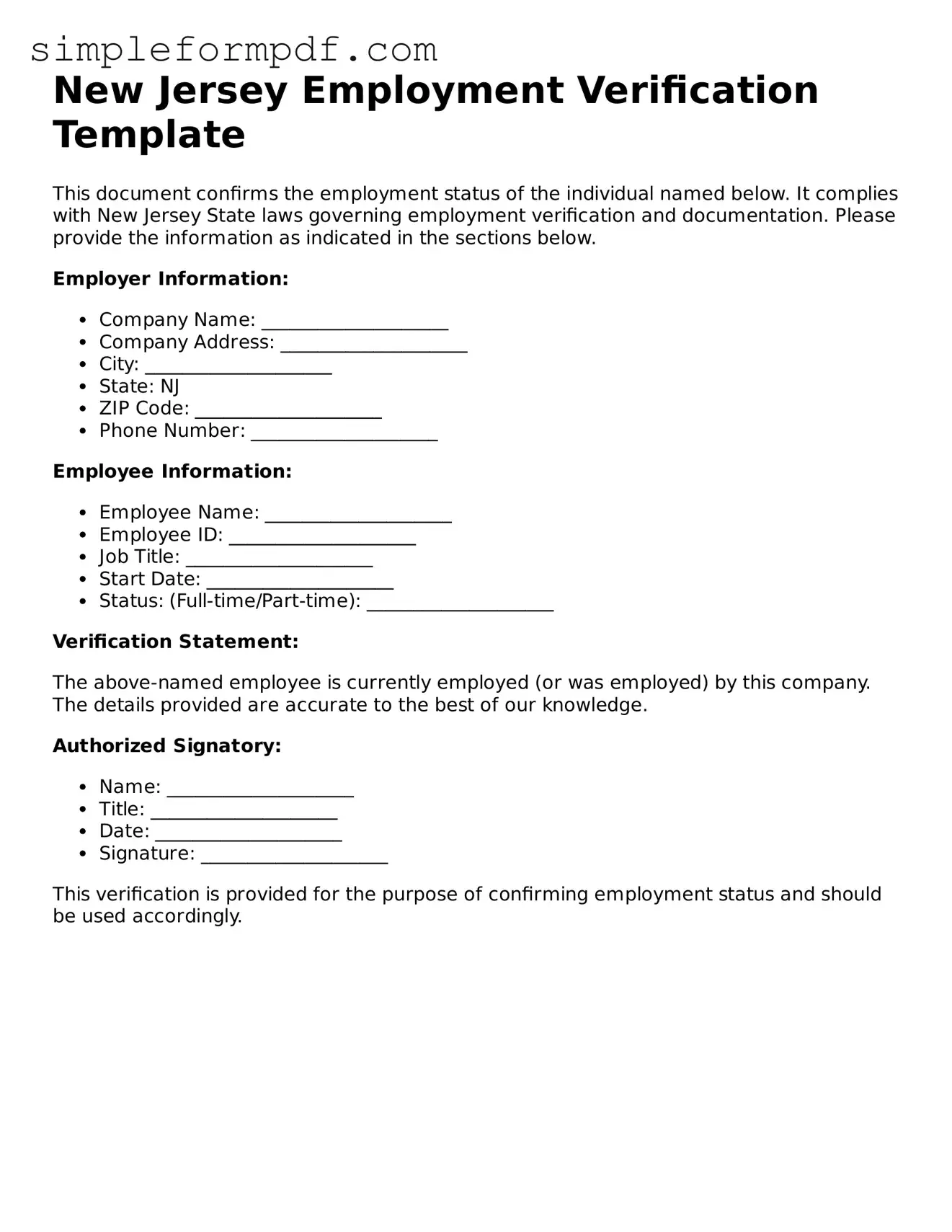New Jersey Employment Verification Template
This document confirms the employment status of the individual named below. It complies with New Jersey State laws governing employment verification and documentation. Please provide the information as indicated in the sections below.
Employer Information:
- Company Name: ____________________
- Company Address: ____________________
- City: ____________________
- State: NJ
- ZIP Code: ____________________
- Phone Number: ____________________
Employee Information:
- Employee Name: ____________________
- Employee ID: ____________________
- Job Title: ____________________
- Start Date: ____________________
- Status: (Full-time/Part-time): ____________________
Verification Statement:
The above-named employee is currently employed (or was employed) by this company. The details provided are accurate to the best of our knowledge.
Authorized Signatory:
- Name: ____________________
- Title: ____________________
- Date: ____________________
- Signature: ____________________
This verification is provided for the purpose of confirming employment status and should be used accordingly.
